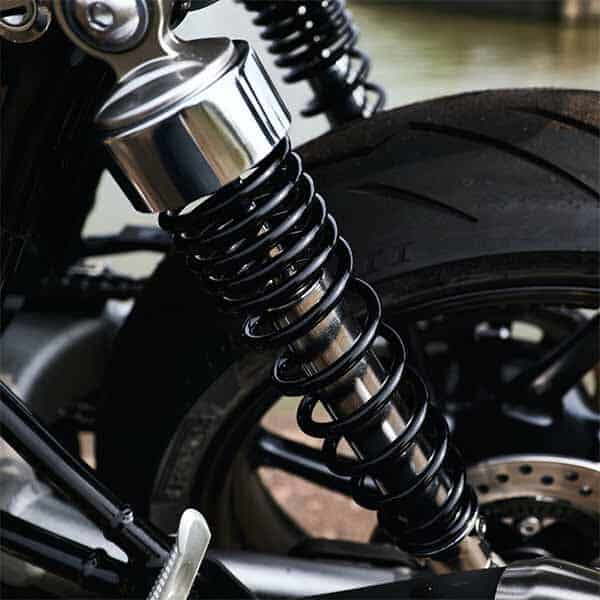You have definitely walked around when suddenly you hear the roar of a motorcycle. Before you see one, you will have heard of it first. Some are not even that fast, but their noise! It leaves you wondering:
Why Do Motorcycles Make So Much Noise?
Smaller Mufflers

The fact that cars can become extremely silent is why people wonder why motorcycles are so loud. One thing to remember is that motorcycles have smaller mufflers than cars do. A motorcycle muffler is about three times smaller than a car’s muffler.
Combustion engines work by mixing air and fuel. Any flue gas coming out of the engine has no use. When the exhaust comes out, it brings with it an inherent sound resulting from these gases expanding.
A muffler is a part of the exhaust pipe that dampens the noise from the engine. It acts as a silencer on a gun.
The exhaust pipe itself is shorter on motorcycles than in cars. The shorter the exhaust, the shorter the muffler, and therefore more noise. The pipes in the motorcycle have a small diameter after the engine, resulting in this noise. Older motorcycles are measured between four feet and five-point five, meaning that the exhaust pipe ranges between two and a half and three and a half feet.
The shorter pipes mean that the exhaust leaves the engine at a higher velocity, creating a pop effect, much like the sound coming out of a shaken soda. The higher popping results in a louder noise.
Open Engine Design
Famous older motorcycles, such as Yamaha, had a design called the 2-stroke engine. The piston-cylinder wear around these engines made the bikes famously known for their louder noise.
However, today, most designs are 4-stroke, making motorcycles have double the speeds of the previous versions. The motorcycles also make less noise, but not less than a car.
Unlike cars, a motorcycle has an open engine that has no damper or casing protection. The absence of such bodies means there is nothing to absorb sound from the engine. Therefore, the sound from the motorcycle engine comes out into the open.
Transmission and Shock Noises

Motorcycles have springs or hydraulic shock absorbers that damp shocks on the road while driving. However, hydraulic shock absorbers are quite rare, and the spring designs are designed with a higher noise factor. The noise increases as the tension in the springs get loose.
The transmission drive of motorbikes, therefore, depends on the chain-gear ratio for power transfer. The design does not include the shaft and coupling assembly; therefore, the noise increases with the chain beating effect. In due time, as the clutch and coupling get loose, the noise level is amplified.
Another factor arises in the time of replacing exhaust pipes. Enthusiastic riders There are several reasons why enthusiast riders modify their bikes to become “loud.”
It makes them cool.
The louder the bike, the safer the rider. More noise means other drivers can recognize you and therefore become vigilant.
Loud noises make people think you are faster. Even though fastness is not guaranteed by noise, some people perceive it as such.
Why Do People Ride Motorcycles That Are Really Loud?

Many older motorcycles came from the factory with pipes that optimized power without regard to noise. In recent years, exhaust systems on motorcycles have become quieter before leaving the factory. They are certainly not silent, but they won’t rattle your teeth during a drive-by.
Many riders enjoy the vintage sound and replace the factory pipes with their own. Others assert that the louder sound keeps drivers more vigilant and helps to decrease accidents. Even though the statement is true, there are no white papers on the subject to back it up.
Some motorcyclists do so to annoy others or to promote their own image. Regardless of the reason, it tends to be a personal preference that not all riders appreciate.
Moreover, noisy straight pipes diminish low- and mid-range rpm performance and power. They boost highway and race performance but are not suitable for riding in the city. Also, it’s important to know that loud bikes get people’s attention, which can sometimes be expensive.
Why Do Motorcycles Have to be So Loud?
Noise regulations apply to motorcycles just as they do to all street-legal vehicles. The U.K. DEFRA has ordered that all road-use bicycles manufactured after 1986 must emit no more than 80dB of noise.
Exhaust systems must also be labeled with the DEFRA’s street-use identification mark. In addition to ensuring performance, factory-installed pipes lower noise and reduce emissions.
Most aftermarket pipes lack a DEFRA stamp and are therefore unsuitable for use on public roads. They are intended for use on bikes that compete on closed courses where high-rpm performance is pushed to its maximum. They’re not intended for use in suburban traffic. Personnel of the local and state law enforcement agencies is responsible for enforcement.
The lawnmower operates at 90 dB. There are 95 decibels of noise within the subway car. Thus, a motorcycle should be more silent. Sadly, many motorcyclists believe that aftermarket pipes are superior and, hence, install them.
There are insufficient law enforcement officials to adequately enforce all laws. Additionally, their holsters lack calibrated decibel sound meters.
In addition, individuals who are caught pay a fine and revert to OME pipes for inspection. The noisy aftermarket pipes are reinstalled following examination. Ultimately, motorcycles are prohibited from making excessive noise.
Motorcycle Noise Laws
46 states approve the federal DEFRA requirement for noise and OME exhaust systems.
Most states in the UK do not possess it or confuse it with legalese. States that mandate unaltered, DEFRA-approved pipes with embossed markings make it easier to enforce.
The DEFRA mandates that all street-legal motorcycles manufactured after 1985 emit no more than 80 decibels. But it is up to each state to decide how it will put federal laws into effect through its own laws.
Typically, a calibrated sound meter is necessary for enforcing noise alone that is excessive or unusual. It’s not as simple as it may appear. The app on a mobile phone is not admissible in court; thus, a meter with a field calibration kit is required. Other, perhaps stronger sounds, will be picked up by the meter, resulting in an inaccurate reading.
The DEFRA-approved motorcycle factory test is conducted under controlled settings. The motorcycle is at full power with meters situated 49.2 feet from the motorcycle, which is difficult to recreate on the side of the road. It would be impractical to seize every bicycle for noise testing. Consequently, many individuals are overlooked unless they engage in additional illicit activity.
Is There a Limit for Motorcycle Noise?
Motorcycles are subject to noise restrictions. All motorcycles manufactured after 1985 are limited to 80 dB by the DEFRA. In some capacity, the majority of states have enacted legislation that supports federal regulation.
The model year and speed qualifiers have unfortunately confused the waters. When you add city laws to this mix, it’s easy to see why law enforcement may seem easy-going about motorcycle noise.
Conclusion
It’s alright to make the alterations you want on your motorcycle for making it loud, but a rider must be aware to not make it too loud which violates local law. The above design explains why motorcycles are noisier. Other than the designs, motorcycles can be maintained to have a friendlier or more original sound.
MS/SS


